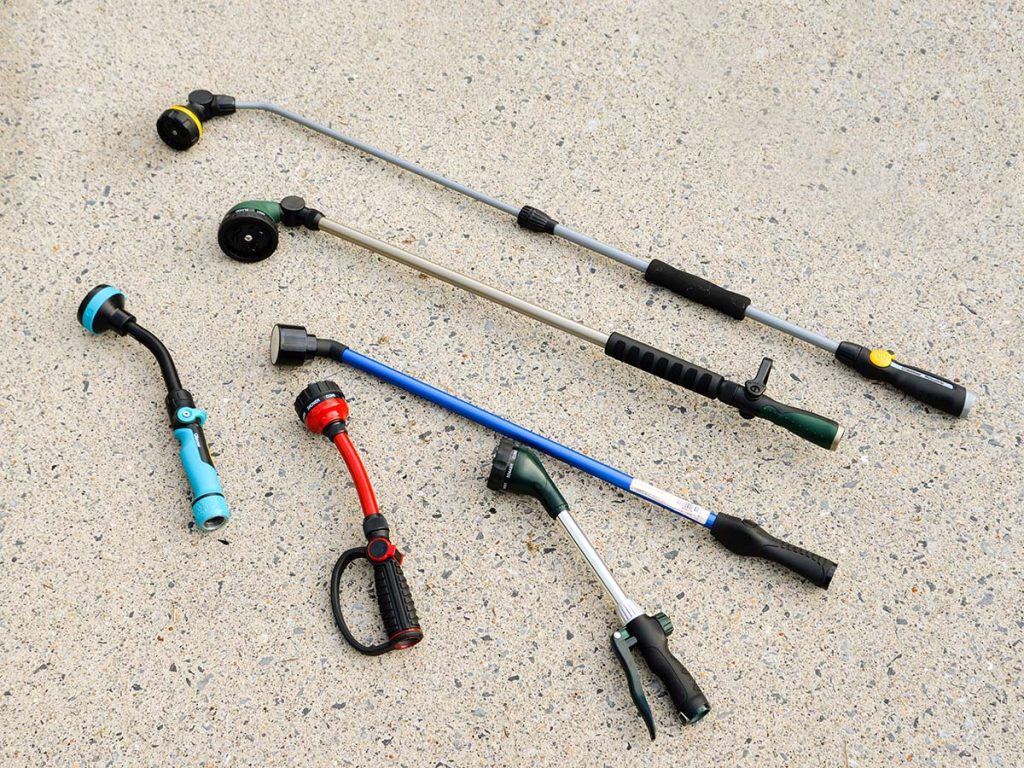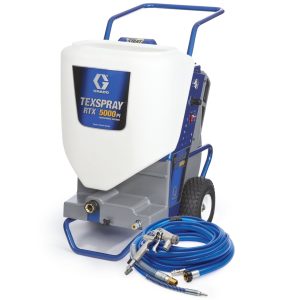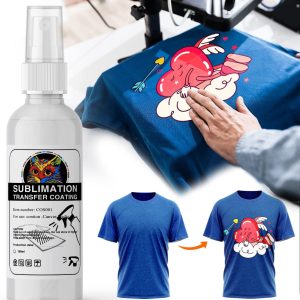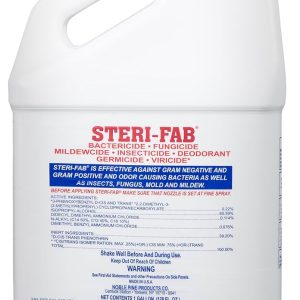
Whether you’re maintaining a lush garden, cleaning hard-to-reach surfaces, or applying treatments to your lawn, a quality spray wand can make the difference between a frustrating chore and an efficient task. These versatile tools have evolved far beyond simple garden hose attachments, now offering precision control, ergonomic designs, and specialized features for virtually every spraying need. Understanding how to select and use the right spray wand for your specific applications can save you time, reduce physical strain, and deliver professional-quality results in both residential and commercial settings.
What Makes a Quality Spray Wand Worth the Investment?
The modern spray wand represents a significant advancement in liquid application technology, combining engineering precision with user-friendly design to create tools that deliver consistent, controlled spray patterns across various applications. Unlike basic nozzles or spray guns, today’s spray wands incorporate multiple adjustment mechanisms, pressure regulation features, and ergonomic enhancements that transform them from simple accessories into essential tools for professionals and homeowners alike. The best models feature durable construction materials such as aircraft-grade aluminum, reinforced polymers, and corrosion-resistant brass components that ensure years of reliable performance even under demanding conditions.
When evaluating spray wand options, it’s crucial to understand that price often reflects not just build quality but also the sophistication of the spray mechanism itself. Premium models typically include variable flow controls, allowing users to adjust water volume from a gentle mist to a powerful jet stream without disconnecting from the water source. This flexibility proves invaluable when transitioning between delicate seedlings and stubborn dirt on concrete surfaces, eliminating the need for multiple tools and reducing overall work time significantly.
Key Features to Look for When Selecting Your Spray Wand
Adjustable Spray Patterns
The ability to modify spray patterns stands as perhaps the most critical feature in any quality spray wand, determining its versatility across different tasks and surfaces. Modern designs typically offer between 7 to 10 distinct spray patterns, ranging from concentrated jet streams capable of removing stubborn debris to gentle shower settings perfect for watering delicate plants. Advanced models incorporate dial-based or trigger-controlled pattern selection, enabling users to switch between settings with one hand while maintaining continuous water flow.
| Spray Pattern | Best Applications | Pressure Range | Coverage Area |
|---|---|---|---|
| Jet Stream | Cleaning concrete, removing mud | High (40-60 PSI) | Narrow (1-2 inches) |
| Fan Spray | Rinsing vehicles, deck washing | Medium (25-40 PSI) | Wide (12-24 inches) |
| Shower | Watering gardens, seedlings | Low (10-25 PSI) | Medium (6-12 inches) |
| Mist | Greenhouse plants, foliar feeding | Very Low (5-15 PSI) | Wide (24-36 inches) |
| Cone | General watering, fertilizer application | Medium (20-35 PSI) | Circular (8-16 inches) |
Ergonomic Design and Comfort Features
Professional landscapers and serious gardeners often spend hours using their spray wands, making ergonomic design a critical consideration that directly impacts user comfort and productivity. The best spray wands feature contoured grips with non-slip rubber or foam padding that reduces hand fatigue during extended use sessions. Some manufacturers have incorporated innovative trigger designs that require less force to operate, utilizing mechanical advantage principles to reduce the effort needed to maintain consistent water flow by up to 40% compared to traditional designs.
Weight distribution plays an equally important role in user comfort, with well-designed spray wands balancing the weight between the handle and the wand shaft to minimize wrist strain. Premium models often include rotating heads that allow users to adjust the spray angle without twisting their wrists, a feature particularly valuable when watering hanging baskets or cleaning underneath vehicles. These ergonomic considerations become even more critical for users with arthritis or reduced grip strength, where features like extended triggers and cushioned grips can make the difference between completing tasks independently or requiring assistance.
Material Construction and Durability
The materials used in spray wand construction directly impact both performance longevity and overall user experience, with significant variations in quality across different price points and manufacturers. Professional-grade spray wands typically feature aluminum or stainless steel shafts that resist bending and corrosion while maintaining relatively light weight compared to their strength. The internal components, particularly the valve mechanisms and seals, should ideally be constructed from brass or high-grade polymers that can withstand constant pressure changes and exposure to various chemicals without degrading.
According to a 2023 study by the Garden Tool Testing Institute, spray wands with brass fittings lasted an average of 3.5 times longer than those with plastic fittings when subjected to daily use and standard garden chemicals. The initial investment in higher-quality materials often pays dividends through reduced replacement frequency and consistent performance over time. Additionally, UV-resistant materials prevent degradation from sun exposure, a critical factor for tools stored outdoors or used in commercial applications where equipment faces constant environmental challenges.
Top Spray Wand Types for Different Applications
Garden and Lawn Care Spray Wands
Garden-specific spray wands represent the most diverse category, encompassing designs optimized for everything from delicate seedling care to heavy-duty lawn treatment applications. These specialized tools often feature extended reach capabilities, with lengths ranging from 16 to 48 inches, allowing gardeners to water hanging baskets, reach deep into flower beds, or treat lawn areas without excessive bending or stretching. Many garden spray wands include built-in shut-off valves that enable users to control water flow without returning to the faucet, a convenience that becomes invaluable when moving between different garden zones or adjusting spray patterns for various plant types.
The evolution of garden spray wands has led to innovative features specifically designed for plant health and water conservation. Some models now incorporate flow meters that help users track water usage, supporting both environmental consciousness and utility cost management. Professional horticulturists often prefer spray wands with fine-mist capabilities for foliar feeding applications, where nutrients are applied directly to plant leaves for rapid absorption. These specialized nozzles create droplets small enough to adhere to leaf surfaces without causing runoff, maximizing nutrient uptake while minimizing waste.
“A quality garden spray wand is an investment in both plant health and gardener comfort. The right tool can reduce watering time by up to 30% while delivering more consistent coverage than traditional methods.” – Dr. Sarah Martinez, Horticultural Extension Specialist
Pressure Washer Extension Wands
Pressure washer spray wands operate under fundamentally different principles than standard garden varieties, handling water pressures that can exceed 3,000 PSI while maintaining user safety and control. These robust tools feature reinforced construction throughout, with double-walled designs and safety triggers that prevent accidental activation. The nozzle tips on pressure washer wands are typically color-coded according to spray angle and intensity, following industry standards that help users quickly identify the appropriate tip for specific cleaning tasks without risking surface damage.
Professional pressure washing contractors often invest in telescoping spray wands that extend from 6 to 24 feet, enabling them to clean second-story siding, gutters, and roof surfaces without ladders. These extended-reach models incorporate sophisticated balance systems and lightweight yet durable materials like carbon fiber or aircraft-grade aluminum to remain manageable despite their length. Safety features become paramount at these lengths, with many models including secondary grip points, trigger locks, and pressure relief valves that activate if the wand experiences sudden pressure spikes.
Chemical Application Spray Wands
Chemical application wands serve specialized roles in pest control, fertilization, and sanitization tasks, requiring unique design features that ensure safe, accurate chemical distribution while protecting users from exposure. These wands typically feature chemically resistant seals and gaskets made from materials like Viton or EPDM rubber that maintain integrity when exposed to harsh chemicals, oils, and solvents. The spray patterns on chemical wands are often more precisely controlled than standard models, with some featuring adjustable cone angles that allow operators to modify coverage area without changing application rate.
Case Study: Green Thumb Landscaping Services reported a 45% reduction in chemical usage after switching to precision chemical spray wands with built-in flow regulators. The company’s owner, Michael Thompson, noted that the improved accuracy not only reduced material costs but also minimized environmental impact and improved customer satisfaction scores by ensuring more consistent treatment results across properties.
How to Properly Use and Maintain Your Spray Wand
Installation and Setup Best Practices
Proper installation of your spray wand forms the foundation for optimal performance and longevity, yet many users overlook critical setup steps that can prevent common problems down the line. Begin by ensuring all connections are clean and free from debris, as even small particles can compromise seals and cause leaks under pressure. When attaching the spray wand to your water source, whether it’s a garden hose or pressure washer, apply thread seal tape to male threads to create a watertight connection that won’t loosen during use. This simple step can prevent the frustration of mid-task disconnections and extend the life of threaded components by preventing cross-threading damage.
The initial pressure test represents a crucial safety step that many users skip in their eagerness to begin work. Start with low pressure and gradually increase to your intended operating level while checking all connections for leaks or unusual sounds. Pay particular attention to the trigger mechanism during this test, ensuring it operates smoothly without sticking or requiring excessive force. For chemical application wands, always perform a clear water test before introducing any chemicals to verify proper flow patterns and identify any potential issues that could affect chemical distribution accuracy.
Cleaning and Storage Guidelines
Regular maintenance of your spray wand extends far beyond simple rinsing, requiring systematic cleaning procedures that address both visible contamination and internal buildup that can affect performance over time. After each use, especially when working with chemicals or mineral-rich water, flush the entire system with clean water for at least 60 seconds to remove residues that could corrode internal components or clog spray orifices. For thorough cleaning, disassemble removable parts according to manufacturer instructions and soak them in a solution of warm water and mild detergent, using a soft brush to remove stubborn deposits without scratching precision-machined surfaces.
Proper storage protects your investment from environmental damage and ensures your spray wand remains ready for immediate use when needed. Store wands in a climate-controlled environment when possible, as extreme temperature fluctuations can cause materials to expand and contract, potentially compromising seals and causing premature wear. Hang wands vertically or store them horizontally on padded supports to prevent warping, particularly for longer models that can develop permanent bends if stored improperly. Before extended storage periods, apply a light coating of silicone spray to moving parts and metal components to prevent corrosion and ensure smooth operation when the wand returns to service.
Troubleshooting Common Issues
Understanding how to diagnose and resolve common spray wand problems can save significant time and expense while preventing minor issues from escalating into major failures. Reduced spray pressure, one of the most frequent complaints, often results from partial clogs in the nozzle or filter screens rather than wand failure. Begin troubleshooting by removing and inspecting the nozzle tip, looking for mineral deposits or debris that may restrict flow. Soak clogged nozzles in white vinegar or a commercial calcium/lime remover for 30 minutes, then use a soft wire or toothpick to clear individual spray holes without enlarging them.
Trigger mechanism problems typically manifest as either difficulty engaging the trigger or inability to maintain consistent flow without constant pressure. These issues often stem from worn O-rings or springs within the valve assembly, components that experience significant wear during normal use. Most quality spray wands include rebuild kits with replacement seals and springs, allowing users to restore like-new performance without replacing the entire unit. When addressing trigger issues, document the disassembly process with photos to ensure correct reassembly, as improper installation of internal components can create safety hazards or render the wand inoperable.
Advanced Techniques for Professional Results
Optimizing Spray Patterns for Different Surfaces
Mastering the relationship between spray patterns, distance, and surface types elevates spray wand usage from basic application to professional-level precision that maximizes efficiency while minimizing waste or damage. When working with delicate surfaces like painted wood or automotive finishes, maintain a consistent distance of 12-18 inches while using fan or shower patterns that distribute pressure across a wider area. This technique prevents concentrated pressure points that could strip paint or cause surface etching while ensuring even coverage that eliminates streaking or missed spots.
Professional applicators often employ a technique called “pattern overlapping,” where each pass covers approximately 30% of the previous pass to ensure uniform coverage without over-application. This method proves particularly effective when applying fertilizers or pesticides, where consistent coverage directly impacts treatment effectiveness. The key lies in maintaining steady movement speed and consistent trigger pressure, skills that develop through practice but dramatically improve results once mastered. Consider practicing on non-critical surfaces to develop muscle memory for different spray patterns and distances before tackling important projects.
Water Conservation Strategies
Implementing water-conscious techniques with your spray wand not only reduces utility costs but also demonstrates environmental responsibility that increasingly matters to both residential and commercial clients. Modern spray wands with built-in flow restrictors can reduce water usage by up to 40% without sacrificing cleaning power or coverage quality. These devices work by creating turbulence within the water stream, effectively increasing velocity while reducing volume, a principle that maintains cleaning effectiveness while conserving resources.
Strategic timing and technique adjustments further enhance water conservation efforts without compromising results. Water during cooler morning or evening hours to minimize evaporation losses, particularly important for garden applications where water needs to penetrate soil rather than evaporate from surface layers. When cleaning hard surfaces, use the “pre-soak and agitate” method where surfaces are wetted with minimal water, allowed to soak briefly to loosen debris, then cleaned with targeted high-pressure bursts rather than continuous flow. This approach can reduce water usage by up to 60% compared to continuous spray methods while often achieving superior cleaning results.
Comparing Popular Spray Wand Brands and Models
Professional Grade Options
The professional market for spray wands features several standout manufacturers who have established reputations through consistent quality and innovation in design. Dramm Corporation, a Wisconsin-based company with over 75 years in the industry, produces the ColorStorm series that has become a standard in commercial greenhouses and nurseries worldwide. Their wands feature precision-machined brass valves rated for over 500,000 cycles and ergonomic designs developed through extensive user feedback from professional growers. The Dramm 30-inch Rain Wand, in particular, has earned recognition for its 400-hole shower head that creates an exceptionally gentle spray pattern ideal for seedlings and delicate plants.
Gilmour Manufacturing offers another professional-favorite line with their Pro series spray wands, which incorporate swivel connections and comfort grip triggers designed for all-day use. Independent testing by Consumer Reports found Gilmour Pro wands maintained consistent spray patterns even after 1,000 hours of continuous use, significantly outperforming many competitors in durability tests. The company’s commitment to professional users shows in details like replaceable valve assemblies and availability of replacement parts for models dating back decades, ensuring long-term serviceability that professionals require.
Budget-Friendly Alternatives
While professional-grade spray wands offer superior durability and features, several manufacturers provide quality options for budget-conscious consumers who need reliable performance without premium pricing. Orbit Irrigation Products has developed a reputation for delivering solid value with their Max line of spray wands, which incorporate many features found in higher-priced models while maintaining affordability through efficient manufacturing processes. These wands typically feature 8 spray patterns, comfortable grips, and flow control valves, providing versatility adequate for most residential applications at prices often 50% lower than premium alternatives.
The emergence of store brands from major retailers has also introduced competitive options that balance quality with affordability. Home Depot’s HDX brand and Lowe’s Blue Hawk line both offer spray wands that underwent redesigns in recent years based on customer feedback and competitive analysis. While these models may lack the refined engineering of premium brands, they often include generous warranty coverage and readily available replacement parts through their respective retail channels. For homeowners who use spray wands occasionally rather than daily, these budget options can provide years of satisfactory service when properly maintained.
Innovative Features in Modern Spray Wands
Smart Technology Integration
The integration of digital technology into spray wands represents the latest frontier in tool evolution, with manufacturers developing products that provide data-driven insights to optimize water usage and application effectiveness. Smart spray wands equipped with Bluetooth connectivity can pair with smartphone apps to track water consumption, log application areas, and even provide reminders for maintenance tasks. These devices typically include flow sensors that measure actual water usage rather than estimates, providing accurate data for both conservation efforts and billing purposes in commercial applications.
Some advanced models now incorporate automated mixing systems for fertilizers and chemicals, using precision metering to maintain consistent dilution ratios regardless of water pressure variations. The Rachio Smart Hose Timer, when paired with compatible spray wands, can automatically adjust watering schedules based on local weather data and soil moisture levels, potentially reducing water usage by up to 50% while maintaining optimal plant health. These systems prove particularly valuable for commercial operations where consistent application rates directly impact profitability and regulatory compliance.
Eco-Friendly Innovations
Environmental consciousness drives continuous innovation in spray wand design, with manufacturers developing features that reduce resource consumption while maintaining or improving performance. Venturi-effect nozzles represent one such advancement, using fluid dynamics principles to draw air into the water stream, creating a mixture that maintains cleaning power while reducing water volume by up to 35%. These designs prove particularly effective for cleaning applications where the mechanical action of water movement matters more than volume.
Material innovations also contribute to environmental sustainability, with several manufacturers now offering spray wands made from recycled ocean plastics or bio-based polymers derived from renewable resources. While these materials initially faced skepticism regarding durability, extensive testing has shown that properly formulated recycled materials can match or exceed traditional plastics in strength and longevity. Companies like Fiskars have committed to using 100% recycled or renewable materials in their spray wand handles by 2025, demonstrating industry movement toward sustainable manufacturing practices without compromising product quality.
Safety Considerations When Using Spray Wands
Personal Protective Equipment Requirements
Operating spray wands safely requires understanding potential hazards and implementing appropriate protective measures that prevent injuries and chemical exposure. When using any spray wand at high pressure, safety glasses or goggles should be considered mandatory equipment, as deflected spray or dislodged debris can cause serious eye injuries. For chemical applications, protection requirements escalate significantly, often necessitating chemical-resistant gloves, waterproof clothing, and respiratory protection appropriate for the specific chemicals being applied. The National Institute for Occupational Safety and Health (NIOSH) recommends consulting Safety Data Sheets (SDS) for all chemicals to determine specific PPE requirements.
Beyond basic protection, consider environmental factors that influence safety requirements during spray wand operation. Wet surfaces created during use present slip hazards, making non-slip footwear essential, particularly when working on slopes or smooth surfaces like pool decks. When using extension spray wands near electrical fixtures or overhead power lines, maintain minimum clearance distances of at least 10 feet and never operate during electrical storms. Professional operators often use fiberglass or other non-conductive wand materials when working in areas where electrical contact remains possible despite precautions.
Preventing Common Injuries
Repetitive strain injuries represent the most common health concern associated with regular spray wand use, particularly affecting wrists, shoulders, and lower backs of users who operate these tools for extended periods. Implementing proper body mechanics can significantly reduce injury risk, including maintaining neutral wrist positions, alternating hands when possible, and taking regular breaks to stretch affected muscle groups. Ergonomic spray wands with padded grips and balanced designs reduce the physical stress of operation, but proper technique remains essential regardless of equipment quality.
Pressure-related injuries, while less common, can be severe and require specific prevention strategies. Never point a spray wand at yourself or others, even when the water supply is disconnected, as residual pressure can cause unexpected discharge. When using pressure washer wands, be aware that the high-pressure stream can penetrate skin and inject water or chemicals into tissue, causing serious medical emergencies. Always engage trigger locks when not actively spraying, and release system pressure before performing any maintenance or nozzle changes. Training programs for commercial operators often emphasize these safety points repeatedly, as complacency with familiar tools often precedes preventable accidents.
Spray Wand Accessories and Attachments
Essential Add-Ons for Enhanced Functionality
Maximizing your spray wand’s versatility often involves strategic use of accessories that expand its capabilities beyond basic functions. Quick-connect fittings rank among the most valuable additions, allowing rapid attachment changes without tools while maintaining leak-free connections rated for full system pressure. These brass or stainless steel fittings typically pay for themselves through time savings alone, particularly for users who frequently switch between different wands or attachments. Professional landscapers often maintain multiple pre-configured wand setups with quick-connects, enabling instant transitions between tasks without workflow interruption.
Flow control valves installed between the water source and spray wand provide precise adjustment capabilities that built-in wand controls may lack. These accessories prove particularly valuable when working with pressure-sensitive applications or when multiple users with different strength levels share equipment. Inline filters represent another crucial accessory, especially in areas with sediment-heavy water or when using reclaimed water sources. These filters trap particles before they reach the wand’s internal mechanisms, preventing premature wear and maintaining consistent spray patterns throughout the equipment’s service life.
For specialized applications, consider foam cannons or spray water bottle attachments that enable soap or chemical application through your existing spray wand. These accessories typically feature adjustable dilution ratios and can transform a standard spray wand into a professional-grade application system suitable for vehicle washing, building maintenance, or agricultural applications. When selecting foam attachments, ensure compatibility with your spray wand’s flow rate and pressure specifications to achieve optimal foam generation and coverage.
Storage and Organization Solutions
Proper storage solutions protect your spray wand investment while ensuring equipment remains organized and readily accessible when needed. Wall-mounted hangers specifically designed for spray wands prevent kinking of hoses and maintain the straight alignment crucial for longer wands that can develop permanent bends from improper storage. These organizers often include additional hooks or compartments for nozzles, fittings, and other accessories, creating a centralized maintenance station that encourages proper equipment care.
Mobile storage carts designed for professional landscapers and maintenance crews offer portability advantages while protecting equipment during transport. Quality carts feature padded wand holders, chemical-resistant surfaces, and drainage systems that prevent water accumulation that could promote corrosion. Some models include built-in hose reels and accessory drawers, creating complete mobile workstations that improve efficiency on large properties or multiple job sites. The initial investment in proper storage equipment often pays dividends through extended equipment life and reduced replacement costs from damage during storage or transport.
Frequently Asked Questions About Spray Wands
What is the ideal length for a garden spray wand?
The ideal length for a garden spray wand typically ranges from 24 to 36 inches for most residential applications, providing adequate reach while maintaining comfortable control. Taller gardeners or those with raised beds may prefer 36 to 48-inch models, while compact 16-inch wands work well for container gardens and greenhouse applications. Consider your specific needs, physical capabilities, and storage space when selecting length, remembering that longer wands provide greater reach but require more storage space and can be more difficult to control precisely.
How often should I replace my spray wand seals and O-rings?
Spray wand seals and O-rings should typically be inspected annually and replaced every 2-3 years under normal residential use, or more frequently with daily commercial use or chemical exposure. Signs that replacement is needed include visible leaks around connections, difficulty maintaining consistent spray patterns, or trigger mechanisms that feel loose or sticky. Keep a rebuild kit on hand for your specific model, as having replacement parts readily available encourages timely maintenance that prevents minor issues from escalating into complete wand failure.
Can I use hot water with my spray wand?
Most standard garden spray wands are designed for cold water use only and can be damaged by temperatures exceeding 100-120°F, which can cause plastic components to warp and rubber seals to deteriorate prematurely. Specialized hot water spray wands designed for commercial cleaning applications can handle temperatures up to 200°F or higher, featuring heat-resistant materials and reinforced construction. Always check manufacturer specifications before using hot water, and never exceed recommended temperature limits as this can create safety hazards and void warranties.
What causes my spray wand to drip after releasing the trigger?
Post-trigger dripping typically results from worn valve seals that no longer create a complete seal when the trigger is released, allowing residual water pressure to escape slowly. This issue can also stem from mineral buildup on valve seats or damaged springs that prevent complete valve closure. Most cases can be resolved by disassembling the trigger mechanism, cleaning all components thoroughly, and replacing worn seals or springs using a manufacturer-specific rebuild kit that ensures proper fit and function.
How do I prevent my spray wand from freezing in winter?
Preventing freeze damage requires complete drainage of all water from the spray wand and associated components before storage in freezing conditions. After use, disconnect the wand, hold it vertically to allow gravity drainage, then operate the trigger several times to expel remaining water from internal passages. Store spray wands in a heated area when possible, or use compressed air to blow out all water if garage or shed storage is necessary. Some users apply food-grade antifreeze to internal components for additional protection, though this requires thorough flushing before spring use.
Are telescoping spray wands as durable as fixed-length models?
Quality telescoping spray wands can match fixed-length models in durability when properly manufactured with robust locking mechanisms and reinforced joints. However, the additional moving parts in telescoping designs do introduce potential failure points that require regular maintenance and careful use to prevent premature wear. Professional-grade telescoping wands with aluminum or fiberglass construction and brass fittings typically provide excellent durability, while budget telescoping models may develop looseness or leaking at adjustment points more quickly than comparable fixed-length options.
For more information about spray wands and professional application equipment, visit National Association of Landscape Professionals
Ready to upgrade your spraying equipment? Browse our complete selection of professional-grade spray wands and discover the perfect tool for your specific needs. From garden care to commercial cleaning, we have the right spray wand to make your job easier and more efficient.





